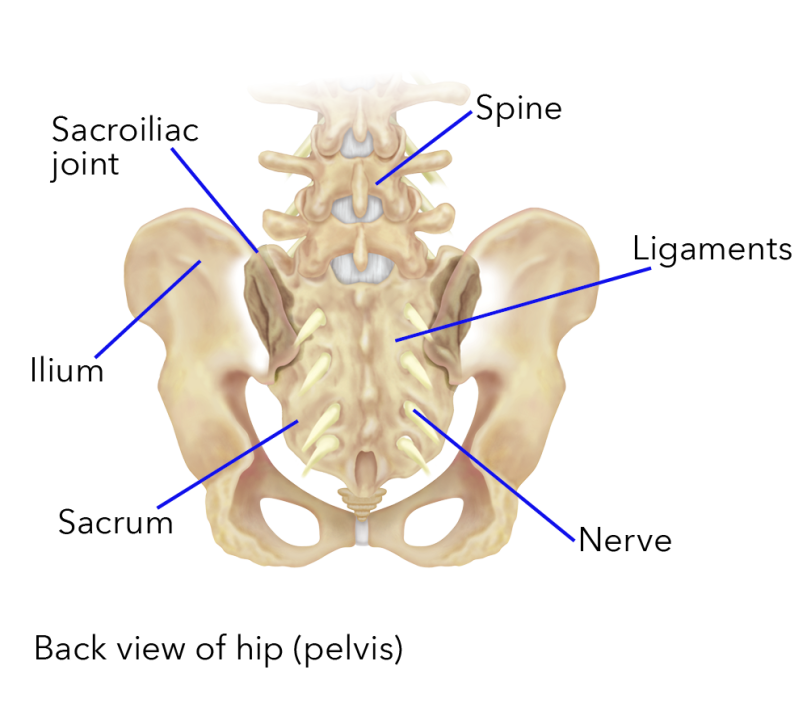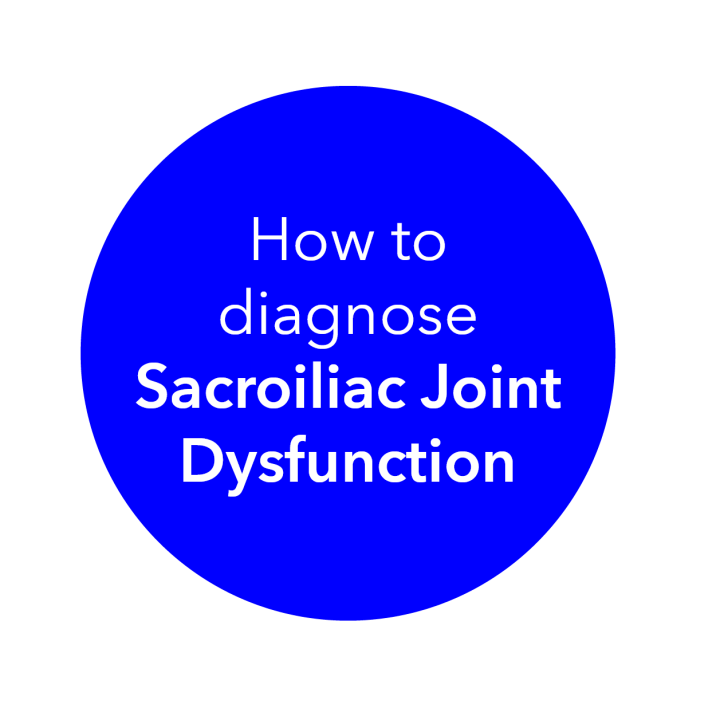How often do you consider the sacroiliac joint when treating patients with lower back pain?
In Australia, back problems are the second most common reason people visit their GP1 with around one in six Australians suffering from back pain.1
It’s estimated that 70–90% of people will experience lower back pain at some point in their lives.3 Lower back pain can significantly impact people’s quality of life both physically and mentally.3
Did you know that between 15% and 25% of patients with axial low back pain can attribute their pain to the sacroiliac joint (SIJ)?4 The SIJ may be an even more common contributing cause of low back pain in patients with prior lumbar fusion.4,5
Although the SIJ accounts for a significant proportion of low back pain, it is often overlooked or underdiagnosed.6 The early and appropriate management of lower back pain may reduce the risk of recurrence and progression to persistent or chronic low back pain.7 GPs can play a crucial role in identifying sacroiliac joint dysfunction, treating this condition, and referring to further care.
What causes SIJ pain?
The SI joints are the two diarthrodial joints connecting the sacrum to the two ilia.4 They are designed for stability and transmitting forces between the upper and lower body.4 Predisposing factors for SIJ pain include true and apparent leg length discrepancy, older age, inflammatory arthritis, previous spine surgery, pregnancy, and trauma.4

Signs and symptoms commonly associated with SIJ dysfunction may include low back pain, buttock pain, hip discomfort, groin pain, and even radiating leg pain.8

Clinical assessment including history and physical examination, diagnostic injections and appropriate imaging tests can be used to diagnose SIJ dysfunction.6
Sign up HERE to receive resources, news and updates on Spine and Orthopaedic conditions.
What treatments are available for SIJ dysfunction?
Treatment options for SIJ dysfunction include conservative care, such as physical therapy, chiropractic medicine, medications, and injections. When a patient has persistent moderate to severe pain, functional impairment, and failed a minimum of 6 months of conservative care, surgical options may also be considered based on careful consideration of the patient’s clinical condition and in consultation with a specialist.6

For more information about Sacroiliac joint dysfunction visit Medtronic.
This resource is intended as an aid to Sacroliliac joint dysfunction assessment and Medical practitioners should rely on their clinical skills and judgment when utilising information provided in this article. For further information on Medtronic’s products and therapies, please visit Medtronic.com.au.
References:
- Australian Institute of Health and Welfare. (2020). Back problems. Retrieved from https://www.aihw.gov.au/reports/chronic-musculoskeletal-conditions/back-problems.
- Britt, H., Miller, G., Henderson, J., Bayram, C., Harrison, C., Valenti, L., Pan, Y., Charles, J., Pollack, A., Wong, C. and Gordon, J. (2016). General practice activity in Australia 2015-16 Bettering the Evaluation and Care of Health GENERAL PRACTICE SERIES NUMBER 40. https://ses.library.usyd.edu.au/bitstream/2123/15514/5/9781743325148_ONLINE.pdf.
- Australian Institute of Health and Welfare 2019. Back problems. Cat. no. PHE 231. Canberra: AIHW. https://www.aihw.gov.au/getmedia/0d9f8959-2a1c-4c99-8c7e-0c8a878f4d6c/Back%20problems.pdf.aspx?inline=true
- Cohen, Steven P. Sacroiliac Joint Pain: A Comprehensive Review of Anatomy, Diagnosis, and Treatment. Anesth Analg2005;101:1440-1453.
- Liliang P-C, Lu K, Liang C-L, Tsai Y-D, Wang K-W, Chen H-J. Sacroiliac joint pain after lumbar and lumbosacral fusion: findings using dual sacroiliac joint blocks. Pain Med Malden Mass. 2011;12(4):565–570.
- Falowski, S., Sayed, D., Pope, J., Patterson, D., Fishman, M., Gupta, M. and Mehta, P. (2020). A Review and Algorithm in the Diagnosis and Treatment of Sacroiliac Joint Pain. Journal of Pain Research, Volume 13, pp.3337–3348. doi:https://doi.org/10.2147/jpr.s279390.
- Primary Health Network Implementation Guide – Low Back Pain Clinical Care Standard. (2022). Available at: https://www.safetyandquality.gov.au/sites/default/files/2022-08/low_back_pain_clinical_care_standard.pdf.
- Mitchell, B., Verrills, P., & Vivian, D. (2012). Sacroiliac joint pain: Diagnosis and treatment. Australasian Musculoskeletal Medicine, 17(1), 15–24. https://search.informit.org/doi/10.3316/informit.482415868079808
Medtronic Australasia Pty Ltd, 2 Alma Road, Macquarie Park NSW 2113. P: 02 9857 9000. www.medtronic.com.au
Medtronic New Zealand Ltd via SCIONZ Authorised Sales Agent. Unit A, 31 Cheshire Street, Parnell, Auckland,New Zealand. P: 0800 724 669 © 2023 Medtronic. All Rights Reserved. CST 238-11-23 ANZ | 13472-112023


